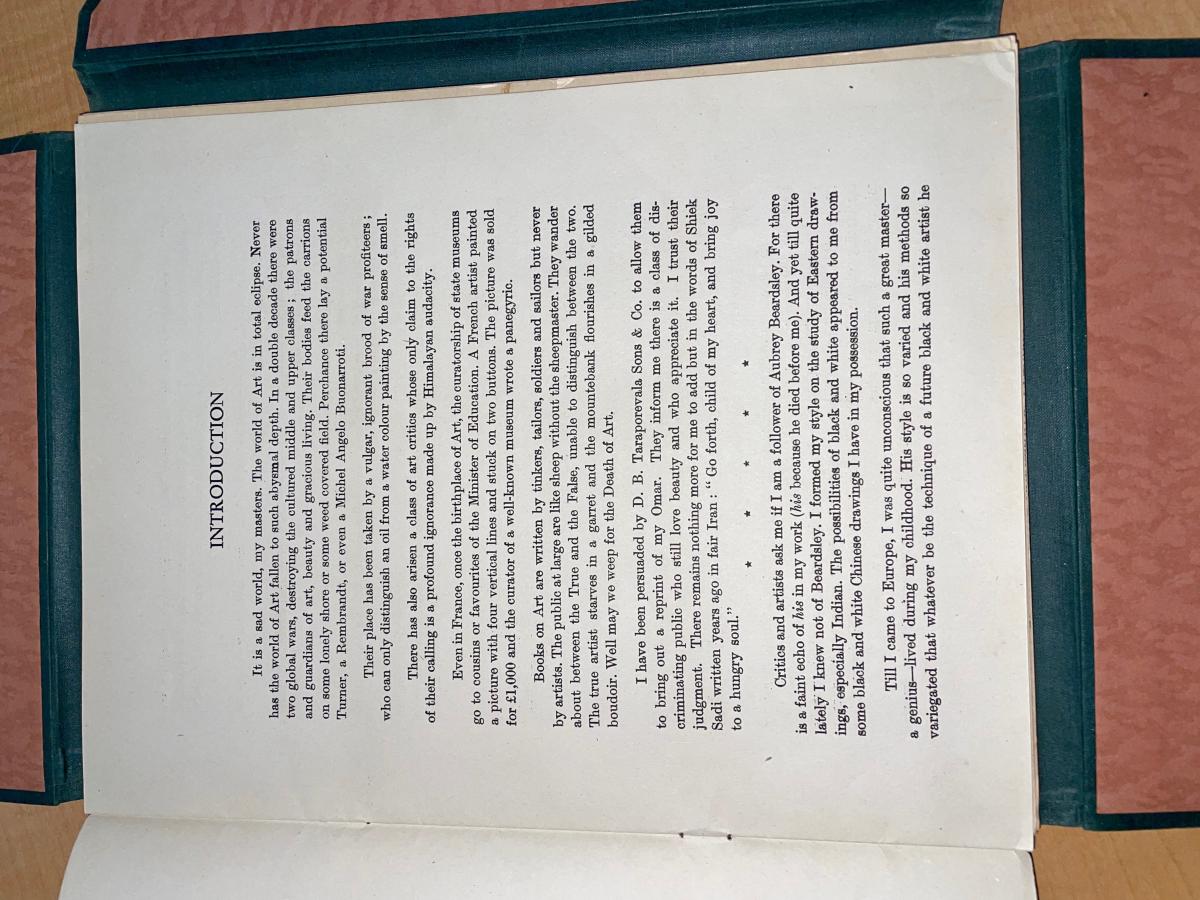In On Exhibit: Victorians and Their Museums, Barbara J. Black discusses the Rubáiyát of Omar Khayyám as an example of how Victorian museum culture and literature shared a common theme of collecting, display, and aestheticization. She connects the popularity of the Rubáiyát with the Victorian fascination with the exotic, the antique, and the ornamental. As Black notes, “The implications of the Rubáiyát's reception are as revealing as those of its translation: Khayyám's Rubaiyat became thoroughly objectified — on the one hand, the idol of a cultic popular enthusiasm and, on the other, the grounds for many a specialist's expertise” (61). This objectification reinforces Black’s argument that the Rubáiyát functioned as a symbolic artifact, revealing how Victorians viewed art, literature, and even other cultures: as things to be collected, ordered, and displayed for aesthetic and moral reflection.
In many ways, my edition of the Rubáiyát aligns with Black’s argument. Like many of FitzGerald’s publications, this edition includes decorative elements intended to enhance its visual appeal. For instance, it is bound in dark green cloth with gold gilt detailing, features that would have increased its production cost and made it more appealing to a Victorian market captivated by the idea of the luxurious and ‘exotic.’ The stylized font used for the title page and headings also contributes to an “Oriental” aesthetic that Victorians might have found alluring or even mysterious. These design decisions certainly support Black’s point that the Rubáiyát became not just a text to be read, but an object to be admired, possessed, and displayed.
However, despite these ornamental features, I do not believe that D.B. Taraporevala Sons & Co. or the illustrator, Mera Ben Kavas Sett, intended to appropriate Persian culture in the way Western publishers sometimes did. In fact, there is clear evidence of cultural awareness and artistic intention in the design. Sett offers insight into his artistic choices in the book’s introduction. On one page, he writes, “Picture 2. –The Persians think that wine improves when poured out by a beautiful boy” (4), indicating an attempt to portray Persian culture as it was understood historically and socially. This is just one example among several where Sett demonstrates a sensitivity to Persian tradition, rather than exploiting it superficially. He also illustrates people wearing traditional attire, such as the Parsi gara saree, which is an article of clothing Persian women began wearing around 650 AD (Rang Riwaaz). These thoughtful inclusions suggest that Sett sought to honor the culture that inspired the poetry, rather than simply decorate the book in a way that would sell. Black states, "The poem's remarkable reception continued in the founding of Omar Khayyám Clubs in both England (1892) and America (1900); the presence of such learned societies proved that Khayyám had become the object of systematic accumulation" (60). Since D.B. Taraporevala Sons & Co. is an Indian publisher, this also disrupts Black's argument about Euro-American appropriation.
That said, I am still uncertain whether a power dynamic is at play here or if the book was created primarily for superficial beauty. It is difficult to fully separate appreciation from appropriation, especially given the book’s visual richness and its circulation within colonial and postcolonial contexts. Sett's introduction reveals his genuine passion for the project, and he notes that the publishers reassured him that “there is a class of discriminating public who still love beauty and who appreciate it” ("Introduction" section). This statement implies that the intent behind the edition was not just commercial, but also artistic; that the creators believed in the cultural and aesthetic value of the work.
The artistic choices throughout this edition support this idea. The illustration style, characterized by flowing lines, stylized figures, and geometric patterns, echoes the traditional visual motifs found in Persian art and architecture. A clear example of this can be seen in the image on the first page of the illustrated quatrains, where geometric forms frame the figures and create a sense of symmetry and harmony. These design choices may serve both as a nod to Persian aesthetics and a way to invite readers into a more immersive visual experience. However, the use of red and green ink throughout the volume, as well as a large amount of black ink for the monochrome illustrations, would have made this edition significantly more expensive to produce than a standard one. This brings us back to a key question: were these elaborate touches added simply to make the book more beautiful for art lovers, or were they meant to amplify its exotic allure and, in doing so, cater to Victorian sensibilities that prized the “Oriental” as something curious and collectible?
In the end, the edition occupies an ambiguous space—part artifact, part artwork. It reflects both the sincere desire to honor a cultural and literary tradition, and the commercial realities of publishing during an era fascinated by the foreign and the decorative. This tension between appreciation and aestheticization lies at the heart of what Black identifies in her analysis: a Victorian impulse to transform meaning into material, poetry into possession, and culture into collectible.
Sources Cited:
Black, Barbara J. On Exhibit: Victorians and Their Museums. Charlottesville, University Press of Virginia, 2000.
Anonymous. “Parsi Gara - Indian Embroidery with Chinese Origin and Persian Heritage.” Rang Riwaaz, 2 June 2017, rangriwaaz.com/blogs/reads-by-rang/indian-embroidery-with-chinese-origin-and-persian-heritage#:~:text=Traditionally%2C%20Parsi%20embroideries%20find%20their,Gujarati%20language%20around%20650%20AD..


